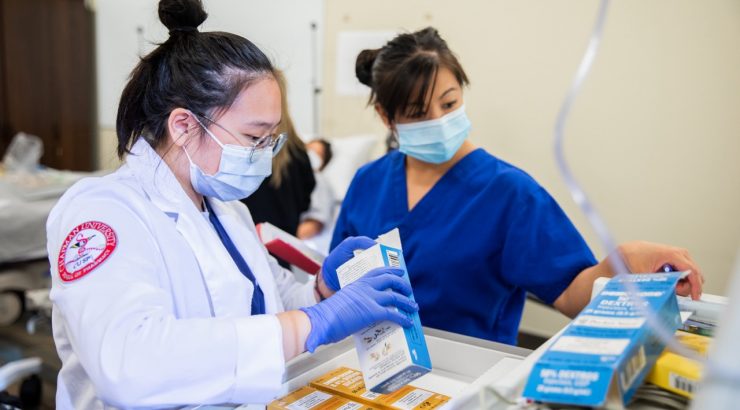Safeguarding Health: The Critical Role of Pharmacists in Patient Safety
October 3, 2024
In celebration of American Pharmacists Month, we would like to highlight the essential role of pharmacists to ensure patient safety by safeguarding medication safety and promoting access across the continuum of care. This occurs at both individual patient care and health systems levels. At individual patient care level, pharmacists ensure access to medications, provide medication information, evaluate their safety and appropriateness, manage complex treatment regimens, assess health status of patients, and coordinate care transitions. At health systems level, pharmacists lead medication safety and quality improvement programs, enhance patient outcomes, address drug shortages, and implement patient safety and stewardship initiatives, such as antimicrobial, opioid, and pharmacogenomics.
Pending federal and state legislation have the potential to further expand pharmacists’ clinical services as healthcare providers. For example, H.R. 1770 bill, also known as the Equitable Community Access to Pharmacist Services Act, allows patients to access testing and treatment services that pharmacists are licensed to provide such as point-of-care testing, administering vaccines and treatments for COVID-19, influenza, pneumococcal, and respiratory syncytial virus. Specifically, the bill provides for continued coverage of pharmacist services relating to evaluation and management of patients. This would ensure broad and equitable population access to care in preventing communicable diseases. Similarly, the 340B PATIENTS Act (H.R. 7635) is a bipartisan legislation that aims to protect and strengthen the 340B drug pricing program and prohibits drug manufacturers from imposing restrictions or denying sales to 340B contract pharmacies. The program requires drug manufacturers to offer discounted prices on outpatient drugs to eligible healthcare providers (e.g., rural hospitals and community health centers) that serve low-income and vulnerable populations. The program has several significant impacts on patient safety that include ensuring patient access to affordable medications and supporting safety-net providers to continue offering essential services (e.g., mental health care, substance-use disorder treatments, and emergency services). Overall, the 340B PATIENTS Act ensures that vulnerable populations continue to receive the care and medications they need at reduced costs.
At the state level, several legislative bills recently passed that expand pharmacists’ scope of practice in California. Senate Bill 339 (SB 339) aims to make HIV prevention more accessible and affordable to all persons with the goal of reducing the transmission of HIV in the state. The bill allows pharmacists to furnish up to a 90-day supply of HIV pre-exposure prophylaxis and post-exposure prophylaxis under certain conditions and mandates that healthcare service plans and health insurers cover the costs of these HIV preventative medications, including related pharmacist services and testing. Another bill, AB 317, requires commercial health plans to provide payment for any covered service performed by a pharmacist and provided at a network pharmacy.
Pharmacists are among the most accessible healthcare providers. They are ideally suited to serve as access points between the community, hospital, and other health systems to optimize medication treatments and adherence, promote patient self-management and monitoring, and improve patients’ healthcare experiences and results. Overall, the roles of pharmacists as stewards of medication and patient safety continue to advance to benefit patients and our communities.
This was originally featured in the Patient Safety Movement Foundation October 2024 newsletter. This was written by Dr. Jerika Lam and Dr. Reza Taheri by invitation.


